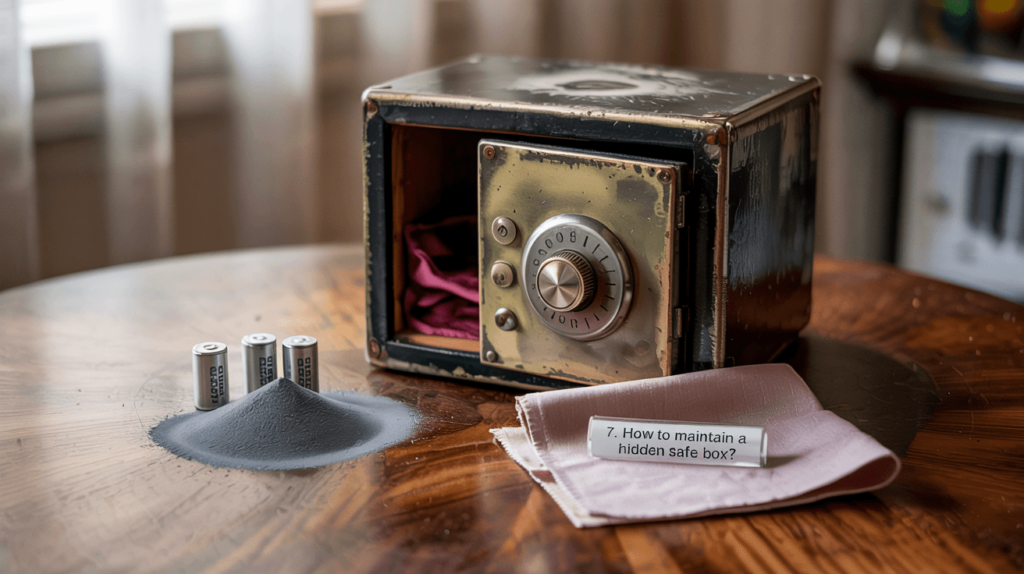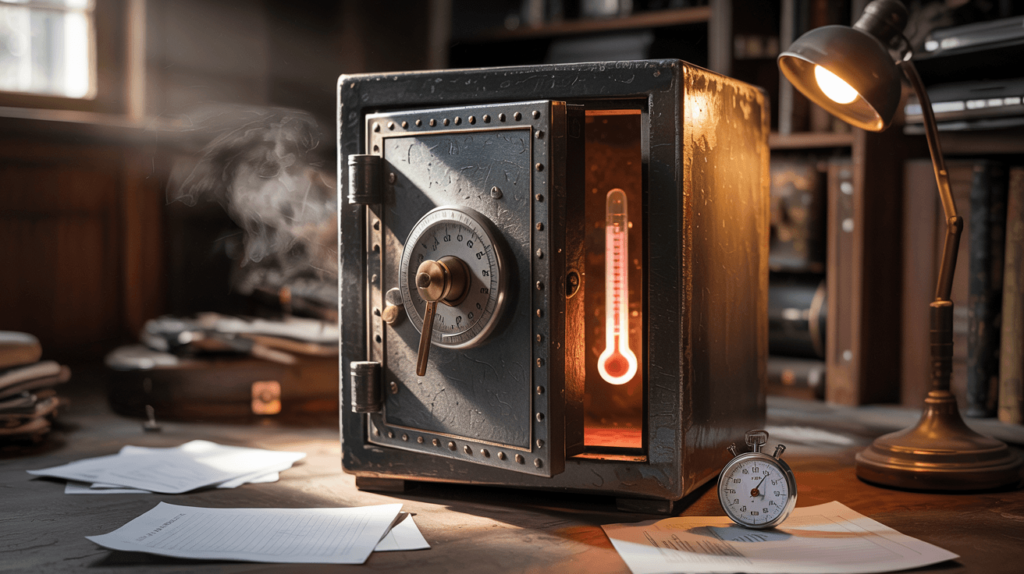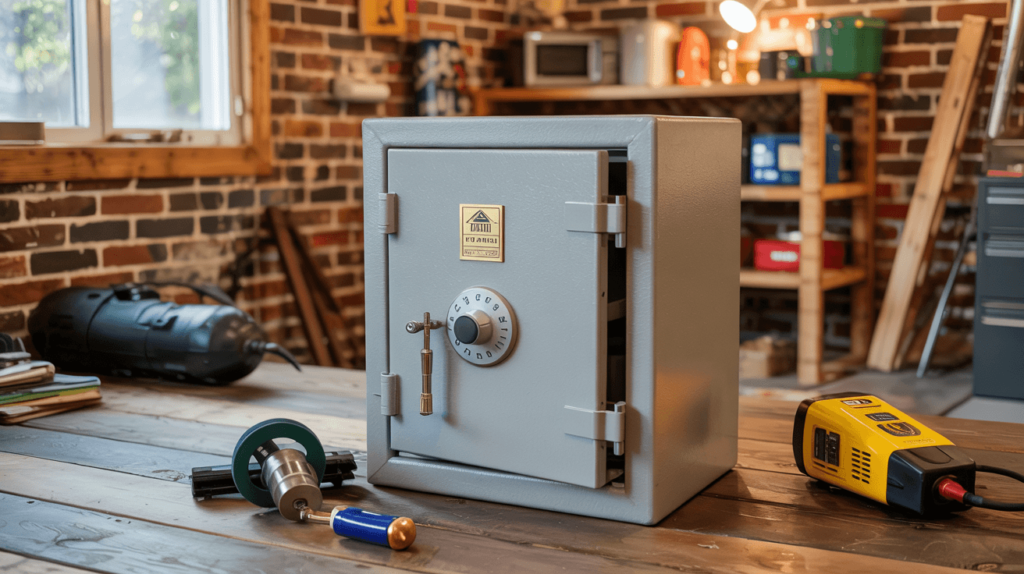1. What Is a Hidden Safe Box for Home?
A hidden safe box for home is a discreet storage unit designed to protect valuables by blending seamlessly into your living space. Unlike traditional safes that stand out as bulky metal boxes, these are camouflaged within walls, floors, or everyday furniture. But here’s the kicker: They’re not just for cash or jewelry. Think passports, digital backups, or even rare collectibles.
Common hiding spots include behind wall paintings, under floorboards, or inside hollowed-out furniture. For example, a bookshelf safe mimics real books but has a lockable compartment. What’s the real story? These safes prioritize stealth over size, making them ideal for small, high-value items.
Materials range from basic steel to fire-resistant alloys, and locking mechanisms vary from classic keys to biometric scanners. Whether you’re hiding heirlooms or sensitive documents, the goal is to keep them invisible to intruders while easily accessible to you.
2. Why Should You Use a Hidden Safe Box?
Burglars spend less than 10 minutes in a home during a break-in. A hidden safe box exploits this by making valuables nearly impossible to find. Ready for the good part? Even if thieves ransack your house, they’ll likely overlook a safe disguised as a power outlet or air vent.
Beyond theft prevention, these safes protect against fire and water damage. Models with a 1-hour fire rating can withstand temperatures up to 1,700°F, shielding paper documents and USB drives. This is where it gets interesting: Some safes even include humidity controls to prevent mold on delicate items like vintage photographs.
For families, hidden safes offer child safety. Store medications, firearms, or hazardous tools out of reach without the need for obvious locks. Teachers, lawyers, and small business owners also use them to secure client data or proprietary information.

3. How Do Hidden Safe Boxes Work?
Hidden safes rely on two core features: concealment and access control. Let’s cut to the chase: The best safes are useless if they’re easily spotted or hacked. Most use tamper-proof hinges and pry-resistant doors, while electronic models include anti-drill plates.
Biometric locks scan fingerprints in under a second, ensuring quick access for authorized users. Keypad systems allow custom PINs, and mechanical locks offer simplicity. Here’s the twist: Advanced models sync with smart home systems, sending alerts if someone tampers with the safe.
Installation varies. Wall safes require cutting into drywall and reinforcing the frame, while floor safes need concrete anchoring. Furniture-based units are plug-and-play but less secure. Always consult a professional for complex setups to avoid structural damage.
4. What Types of Hidden Safe Boxes Exist?
From minimalist designs to high-tech vaults, hidden safes cater to diverse needs. You might be wondering: Which type fits your home? Wall-mounted safes are popular for their space efficiency. They nest between studs and can be hidden behind mirrors or art.
Floor-embedded safes, often used in closets or garages, provide heavier protection but require professional installation. Decorative options include faux electrical panels or coffee tables with secret compartments. But wait—there’s more: Smart safes integrate with apps, allowing remote monitoring and temporary access codes for guests.
Niche models cater to specific needs. For example, gun safes with quick-access biometrics or document safes with UV protection. Always match the safe type to your primary use case, whether it’s daily access or long-term storage.
5. How to Choose the Best Hidden Safe Box for Your Home?
Size matters. A 0.5-cubic-foot safe fits cash and jewelry, while a 2-cubic-foot unit holds laptops or rifles. Pro tip: Measure your largest item and add 20% for future needs. Budget ranges from 50forbasiclockboxesto50forbasiclockboxesto1,500+ for fireproof, app-enabled models.
Certifications like UL (Underwriters Laboratories) or ETL indicate rigorous testing. Look for safes rated for both theft and fire resistance. Don’t overlook this: Check warranty terms—reputable brands offer at least 5 years of coverage.
Read reviews focusing on real-world performance. Did the lock fail during a power outage? How easy was installation? Prioritize brands with responsive customer service, as hidden safes often require technical support.

6. Where Should You Install a Hidden Safe Box?
Location is half the battle. Think about it: A safe in the master bedroom closet is predictable. Instead, opt for less obvious spots like the laundry room or basement. Avoid areas prone to humidity or temperature swings, which can damage electronics.
Wall safes work well in hallways or behind large appliances. Floor safes suit garages or under heavy furniture. Key reminder: Ensure the installation site doesn’t interfere with plumbing or electrical systems.
DIY installation is possible for lightweight models, but hire a contractor for heavy-duty safes. They’ll reinforce walls, anchor the safe, and patch up any visible damage. Always test the locking mechanism post-installation.
7. How to Maintain a Hidden Safe Box?
Dust and debris can jam locks. Clean the exterior monthly with a microfiber cloth and vacuum the vents. Here’s a pro move: Lubricate mechanical locks annually with graphite powder, not oil, which attracts grime.
For electronic locks, replace batteries every 6–12 months. Use lithium batteries for longer life. Test the lock weekly—better to discover a dead battery during a drill than an emergency.
Schedule annual security audits. Check for rust, loose bolts, or software updates. If your safe uses Wi-Fi, ensure firmware is current to prevent hacking.

8. Can Hidden Safes Withstand Fire or Water Damage?
Fire resistance depends on the safe’s rating. A 30-minute rating protects during small fires, while 2-hour models suit wildfire-prone areas. But beware: No safe is entirely fireproof—temperatures above 2,000°F will compromise most materials.
Waterproof safes use silicone gaskets and raised floors to prevent flooding. However, prolonged submersion can still seep water. For critical documents, pair the safe with a waterproof pouch.
Store irreplaceable items like wills in a bank safety deposit box. Use hidden safes for items needing frequent access.
9. Are Hidden Safe Boxes Legal?
In most regions, owning a hidden safe is legal. However: Storing illegal items (e.g., unregistered firearms) voids this protection. Check local laws on firearm storage or cash limits.
Insurance companies often require safes for high-value item coverage. Submit your safe’s specifications and installation proof to qualify for discounts.
If a safe is stolen, report it immediately. Provide photos, serial numbers, and purchase receipts to authorities and insurers.
10. How Do Hidden Safes Compare to Bank Safety Deposit Boxes?
Bank boxes offer higher security but lack accessibility. Here’s the trade-off: Hidden safes let you grab items anytime, while banks restrict access to business hours.
Cost-wise, hidden safes are a one-time purchase (200–200–2,000), whereas bank boxes charge annual fees (50–50–300). For items like emergency cash or daily-use jewelry, a hidden safe is more practical.
11. What Are the Most Common Mistakes to Avoid?
Using default factory codes like “1234” invites hackers. Act now: Reset codes immediately after purchase. Avoid obvious hiding spots like under the mattress or in a sock drawer.
Overloading the safe strains hinges and locks. Check the weight limit—most residential safes max out at 100 lbs. Never share access codes with non-family members.
12. How to Test Your Hidden Safe Box’s Security?
Conduct a mock burglary. Time how long it takes to locate and open the safe. Shocking fact: Most burglars give up after 2–3 minutes. Upgrade if your safe fails this test.
Test fire resistance by placing a thermometer inside during a controlled burn. For electronic locks, simulate power outages or dead batteries.

13. What Are the Latest Innovations in Hidden Safes?
Biometric scanners now recognize multiple fingerprints and even veins. Future alert: AI-powered safes can detect intruders via facial recognition and alert your phone.
Tamper-proof alarms emit 120 dB sirens and auto-dial security services. Voice-activated locks respond to custom phrases, eliminating the need for physical keys.
14. How Much Does a Hidden Safe Box Cost?
Entry-level models start at 50–50–200. Mid-range (200–200–800) adds fireproofing and digital locks. Premium units ($800+) include smart features and custom finishes.
Installation costs 100–100–500, depending on complexity. Factor in long-term savings from avoided thefts or insurance discounts.
15. Can You Build a DIY Hidden Safe Box?
Yes, but with caveats. Proceed with caution: DIY safes lack professional-grade security. Use thick steel plates, anti-drill locks, and hidden hinges.
Tools needed include a angle grinder, welder, and concrete anchors. For inspiration, repurpose old furniture like filing cabinets or microwaves. Always disclose DIY safes to insurers—they may require inspections.

FAQ Section
Q1: What is the most secure lock type for a hidden safe?
Biometric fingerprint locks are currently the most secure due to their uniqueness and speed.
Q2: Can hidden safes be installed in apartments?
Yes, but choose lightweight, non-permanent models like furniture safes to avoid violating lease terms.
Q3: How often should I update my safe’s access codes?
Change electronic PINs every 3–6 months and immediately after granting temporary access.
Q4: Are hidden safes pet-proof?
Most are, but avoid placing them where pets can chew wiring or trigger motion sensors.
Q5: Do hidden safes require internet connectivity?
Only smart safes with remote features need Wi-Fi. Traditional models operate offline.




